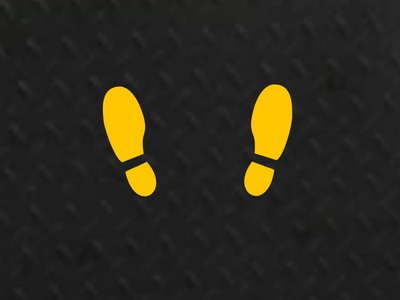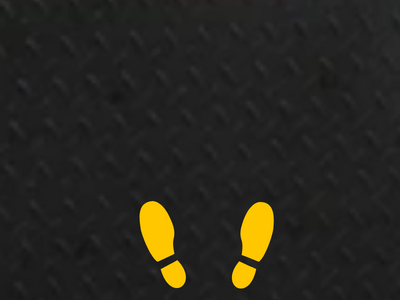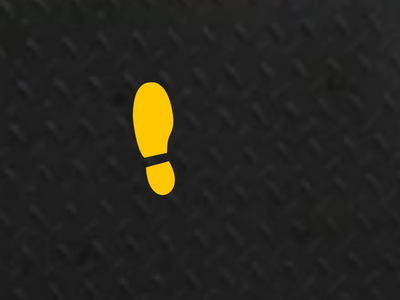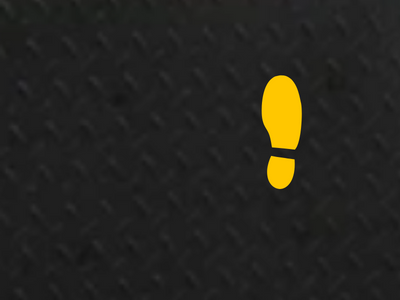
Ever wonder how you should place your feet on the leg press? Well, there's not just one way as you might already know.
In fact there a tons of ways to place your feet on the leg press machine, and each one has there certain benefit.
Let cover some details to make sure you know what we're talking about.
What is the Leg Press Machine?
The leg press machine is used to target the muscles in the legs and is an excellent alternative to traditional leg exercises such as squats or lunges.
This machine provides a controlled and safe environment to perform leg exercises, making it a popular choice for those looking to strengthen and tone their lower body.
With this added level of adjustment that we speak of, the foot position, you can take your leg workouts to the next level!
Foot placement can affect the muscles targeted during the exercise, and can ultimately determine the effectiveness of the workout.
In this article, we will explore the different foot placements on the leg press machine and their benefits for targeting specific muscle groups.
By the end of this article, you will understand the top leg press foot positions like a true pro.
Also check out our best leg press machine resource for more info on which leg press best suits you!
What Are The Common Types Of Leg Press Machine?
There are multiple types of leg press machine that all bring different benefits to the user. The foot placement strategies apply to each and every one of them!
-
45 Degree Linear Leg Press: A popular machine that allows users to push weight on a sled at a 45-degree angle. This type of leg press machine is often found in commercial gyms and is plate-loaded.
-
Horizontal Seated Leg Press: A machine used in a seated position with the legs extended out in front of the body. This type of leg press is typically a pin selectorized style machine and allows for a more comfortable and supported leg press movement.
-
Angled Leverage Leg Press: A machine that utilizes a lever system for resistance. This type of leg press machine is often found in many types of gyms and allows for a smooth and controlled leg press movement with a deep range of motion.
-
Dual Function Leg Press (Leg Press / Hack Squat): A machine that can be used as both a leg press and a hack squat. This type of leg press machine is often designed for home gyms and provides users with versatility in a smaller amount of space than two machines.
-
Vertical Leg Press: A machine that allows users to perform a leg press movement in a vertical position while lying flat on their back. This type of leg press machine is typically plate-loaded and can provide a unique challenge to the legs with ultimate back and neck safety.
-
Compact Leg Press: A machine designed to take up less space than traditional leg press machines. This type of leg press machine is often found in home gyms and can provide a challenging leg workout in a smaller space, and cheaper price point then the rest.
-
Iso-lateral Leg Press: A machine that allows users to work each leg independently. This type of leg press machine is often found in commercial gyms and can help users correct any imbalances between their legs, as well as provide an advanced level of isolation for developed lifters.
Related: 7 Types of Leg Press Machine
What is the Best Type of Leg Press?
The answer to this question largely depends on individual needs, experience level, and desired outcomes. The benefits of the leg press are slightly different depending on which type, so it is essential to choose the one that best fits your goals and preferences.
For those who are new to weight training or have specific mobility concerns, a horizontal seated leg press may be the best option, as it provides a comfortable and supported movement. The angled leverage leg press, on the other hand, may be better suited for experienced lifters looking for a more challenging range of motion.
Ultimately, the best type of leg press machine is the one that you have access to and can use consistently as part of your workout routine. If you are looking to build muscle mass and strength, it is important to choose a machine that allows you to progressively overload your muscles over time.
Consider your goals, experience level, and accessibility when choosing the best type of leg press machine for your needs. With consistent training and proper form, any of the types of leg press machines can help you achieve your fitness goals.
Related: 7 Best Alternatives Machines to The Leg Press
What Muscles Does the Leg Press Work?
Quadriceps
- Rectus femoris.
- Vastus lateralis.
- Vastus medialis.
- Vastus intermedius
The quadriceps muscles located in the front of the thigh are heavily recruited during the leg press exercise.
The degree to which the quads are activated will depend on the foot placement on the platform, which we will get into as we progress through the article.
Hamstrings
- Semimembranosus.
- Semitendinosus.
- Biceps femoris - Long head.
- Biceps femoris – Short head.
The muscles located in the back of the thigh also play a role in the leg press, especially when the feet are placed higher up on the platform.
Glutes
- Gluteus maximus.
- Gluteus medius.
- Gluteus minimus.
The gluteal muscles in the buttocks are activated during the leg press exercise, particularly when the feet are placed lower on the platform.
Calves
Although not a primary target, the calf muscles can also be worked to some degree during the leg press exercise.
Full Article: Leg Press Muscles Worked
Why Does Foot Placement On The Leg Press Machine Matter?
Foot placement on the leg press machine is an essential aspect of the exercise that can greatly impact the muscles targeted and the overall effectiveness of the movement.
Here are some reasons why foot placement on the leg press machine matters:
-
Changes Muscle Emphasis: Foot placement on the leg press can change the emphasis placed on the various lower body muscles involved in the exercise. Depending on the position of the feet on the platform, the quads, hamstrings, and glutes can be targeted to different degrees.
-
Changes Joint Angle: The angle of the joints involved in the leg press exercise can also be impacted by foot placement. A wider stance, for example, can place greater stress on the hips and require more activation of the glute muscles.
-
Can Increase or Decrease Range of Motion: The placement of the feet can also impact the range of motion of the exercise. Placing the feet higher up on the platform can decrease the range of motion, while placing them lower can increase it.
-
Can Affect Comfort and Safety: Proper foot placement on the leg press machine is crucial for ensuring comfort and safety during the exercise. Placing the feet too high or too low on the platform can increase the risk of injury or discomfort.
Foot placement on the leg press machine is a critical factor in the effectiveness of the leg press workout.
By understanding the impact of foot placement(which is our goal with this passage) you can master leg press foot placement and get to a new level of leg day workouts!
Where Should YOU Place Your Feet On The Leg Press?
Ultimately, the placement of your feet on the leg press is up to you and your specific fitness goals.
Experimenting with different foot positions can help target different muscle groups and achieve varying degrees of difficulty.
It's important to understand the benefits and drawbacks of each foot placement, and to listen to your body to determine what feels most comfortable and effective for you.
Without further ado, lets dive into the meat and break each of the best leg press foot positions in greatest detail, so you can master the leg press ASAP!
Top 7 Leg Press Foot Placement Positions Explained
There are 5 main leg press foot positions to be aware of, and each one can vary slightly based on your body, or your preferences.
We also cover 2 bonuses that you can try out to make the leg press an even more versatile workout tool for you.
Here are the main 7 foot positions for your feet on the leg press:
-
Standard: Shoulder width foot placement
-
Wide: 1.5x - 2x shoulder width foot placement
-
Narrow: Feet together or inches apart
-
High Stance: Feet close to the top of the foot plate
-
Low Stance: Feet close to the bottom of the foot plate
-
Single Leg: Iso-lateral training with the leg press
-
Toes Only: Calf raises on the leg press
Standard: Shoulder width foot placement

The standard foot placement on the leg press involves placing your feet shoulder-width apart in the dead center of the footplate, with your toes slightly pointed outward.
This position is considered the default or starting position for the leg press, and is used by many people to target the overall leg muscles.
To perform this foot placement correctly, make sure your back is pressed firmly against the seat and that your knees are in line with your toes, and center on the leg press' foot plate.
Muscles Worked
The standard foot placement of the leg press machine generally targets the low body; The quads, hamstrings, and glutes.
It makes for an even platform to engage the full lower body chain somewhat evenly, with no specific muscle group in mind to isolate more effectively than the others.
Benefit:
The standard foot placement on the leg press is great for beginners, as it provides a stable base and is easy to execute correctly.
It's also a good option for those looking to target the overall leg muscles, as it hits the quads, glutes, and hamstrings to some degree.
Wide: 1.5x - 2x shoulder width foot placement

When performing the leg press with a wide stance, the feet are placed much wider than shoulder-width apart, often 1.5 to 2 times wider than the shoulders or as wide as the leg press foot plate will allow.
This stance allows for a great range of motion, which can lead to increased activation of the glutes, hamstrings, and adductor muscles.
The wide foot position should also be matched with a bit more angling of the toes outwards to match the wider hip placement comfortably.
Muscles Worked
The wide stance leg press primarily targets the glutes and hamstrings, with significant activation of the quads and adductors as well.
Any of the leg press machine foot stances will engage all the muscles to a certain extent, but the wide stance aims to involve the glute muscles, hamstrings, and adductors just a tad bit more!
Benefit:
The benefit of the wide stance leg press is the increased range of motion and muscle activation in the glutes and hamstrings.
This foot placement can be beneficial for those looking to target these muscles specifically, such as powerlifters or athletes looking to improve their strength and explosiveness in the lower body.
Narrow: Feet together or inches apart

For the narrow stance leg press, the feet are placed close together, typically just a few inches apart, centered in the middle of the foot plate.
This stance shifts the emphasis onto the quadriceps and also engages the inner thigh muscles more than the other stances.
The narrow stance can be an effective way to target the quads and can be especially useful for bodybuilders or athletes looking to build size and definition in their quadriceps.
Muscles Worked
The narrow stance leg press primarily targets the quadriceps, with secondary activation of the glutes and hamstrings.
This stance also emphasizes the vastus medialis, which is the inner head of the quadriceps muscle.
Benefit:
The narrow stance leg press can be used to specifically target the quads, making it a useful exercise for those looking to build strength or size in their quadriceps.
It can also be useful for those who may have trouble engaging their quads during other exercises, as it places a greater emphasis on this muscle group.
High Stance: Feet close to the top of the foot plate

This variation involves placing your feet higher on the foot plate compared to the standard foot position. To do this, you'll need to position your feet towards the top of the foot plate, leaving the lower portion of the plate unused.
When performing the leg press with a high stance, you'll be targeting your hamstrings and glutes to a greater degree. The high stance shift more of the emphasis from your quads to your posterior chain muscles.
By incorporating the high stance leg press variation into your workout routine, you can help to improve the development of your hamstrings and glutes, helping you to achieve a more balanced and complete lower body.
Combine the high stance with the wide and narrow foot positions to add even more versatility.
Muscles Worked
The high stance leg press mainly targets the hamstrings and glutes. It also works the quads and calves to some extent.
Benefit:
The high stance leg press can help to build strength and size in your hamstrings and glutes. Additionally, it can help to improve overall lower body development and balance.
By using different foot positions, you can target specific muscle groups, allowing you to tailor your workout to your individual goals and needs.
Low Stance: Feet close to the bottom of the foot plate

The low stance involves placing the feet at the bottom of the foot plate, with toes pointed slightly outward and feet narrower than shoulder-width apart.
This foot position places greater emphasis on the quads, with less activation of the glutes and hamstrings.
The low stance also allows for greater range of motion and deeper knee flexion, which can increase activation of the quadriceps muscles.
Muscles Worked
The primary muscle worked in this foot position is the quadriceps, with less activation of the glutes and hamstrings.
The low stance can be a great option for those looking to target the quads specifically, or for those with limitations in hip or knee mobility.
Benefit:
The low stance foot position on the leg press can provide a greater deeper knee flexion, leading to increased activation of the quadriceps muscles.
This can be beneficial for those looking to target the quads specifically or who have limitations in hip or knee mobility.
Single Leg: Iso-lateral training with the leg press


The single leg leg press is a variation of the leg press exercise that involves working out one leg at a time.
This type of leg press is ideal for those who want to train their legs iso-laterally, meaning each leg is working independently without the help of the other.
To perform this exercise, you'll need to sit on the leg press machine and place one foot on the foot plate while keeping the other foot off the ground.
To perform the iso-lateral leg press on a standard leg press machine, typically you would place your foot vertically in the center of the foot plate, slightly towards the side of the leg you are focusing on.
Muscles Worked
The single leg leg press primarily targets the quadriceps, hamstrings, and glutes, just like the standard leg press.
However, since you're working out one leg at a time, you'll also engage your core and stabilizer muscles to maintain balance and control.
Benefit:
The main benefit of the single leg leg press is that it allows you to work each leg independently, which can help correct any muscle imbalances you may have.
Additionally, it can help you isolate and target specific areas of the legs that may need more attention.
Toes Only: Calf raises on the leg press

Calf raises on the leg press can be a great way to target the muscles in your calves.
To perform this exercise, you'll need to place the balls of your feet on the lower portion of the footplate, with your toes pointed straight ahead and your heels hanging off the edge of the platform.
When performing the exercise, push the weight up with your toes as high as possible, hold for a second, then lower the weight back down.
Keep your legs straight throughout the movement to target your calves more effectively.
Muscles Worked
This exercise primarily targets the muscles in your calves, specifically the gastrocnemius and soleus muscles.
Benefit:
Calf raises on the leg press can help to increase the strength and size of your calf muscles.
Strong calves can improve your overall leg strength and stability, as well as your athletic performance in activities such as running, jumping, and cycling.
Additionally, this exercise can help to improve your ankle mobility and flexibility.
What is the Best Leg Press Foot Placement?
There is no one-size-fits-all answer to this question since the best foot placement on the leg press machine depends on the individual's fitness goals, experience level, and personal preferences.
However, the standard foot placement with the feet shoulder-width apart, toes pointed slightly out, and placed in the dead center of the foot plate is a good starting point for most people.
From there, you can experiment with different foot positions to find what works best for you.
Keep in mind that foot placement can affect which muscles are targeted and how much weight can be lifted, so it's essential to consider your goals when choosing a foot placement on the leg press machine.
As a common rule of thumb keep this guide in mind. The order of which we place the position targets the muscle at hand best.
If you want the best quad workout possible, do a narrow, low, stance leg press.
Same applies to the rest, follow the positions in order for the best workout on that muscle.
Quads: Narrow > Low > Standard > Wide > High
Hamstrings: High > Wide > Standard > Low > Narrow
Glutes: Wide > High > Standard > Narrow > Low
Leg Press Foot Placement Conclusion
In conclusion, mastering the seven different leg press foot placements - standard, wide, narrow, high, low, single leg, and calf raises - can be an effective way to target various muscle groups in the legs.
Each position offers its own benefits and can be tailored to fit individual preferences and strengths.
By incorporating these positions into your leg workout routine, you can maximize your gains and achieve your fitness goals.
So why not start experimenting with these foot placements today and see where they take you on your fitness journey?
Do you need a leg press machine for home or commercial facility? Shop our full collection of leg press machines for sale from top brands and manufactures today!
Want to read more? Check out some of these other resources:



















